|
|
|---|
(For this exercise, you need feedback as to whether the point of your shoulder blade
is protruding or not. For ease of illustration, the accompanying pictures demonstrate
use of the opposite thumb to get that feedback. You may use your thumb.
alternatively you may use the wall for feedback as per instructions that follow.
First Protrude the Shoulder Blade:-
- Llean back into a wall with both hips and both shoulders touching.
- Stand relaxed and point with your right arm at a spot on
the floor.
- Move the arm until you can feel the shoulder blade protruding into the wall behind you.
Correcting the protruding shoulder blade:- Action
(Maintain a relaxed neck & shoulder throughout)
- Raise the shoulder of your
pointing arm.
- Take the point of the shoulder backwards toward the wall behind you.
(The shoulder blade will now be flush with the ribs and no longer protruding).
- Keep your neck and shoulder relaxed by lengthening your shoulder sideways (away from your neck),
- Roll your shoulder blade away from your ear.
- "Glue your shoulder blade to your ribs".
(Exercises alone will not fix or prevent protruding shoulder blades -
you need to become posturally aware. In severe cases of shoulder blade protrusion,
there may be a surgically treatable nerve deficit - see ref (2) >>>>....)
|
|
Pictures:- Use of the thumg to Monitor Protruding Shoulder Blade
|
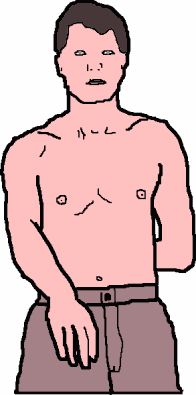
|
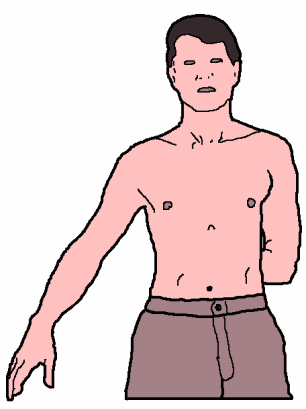
|
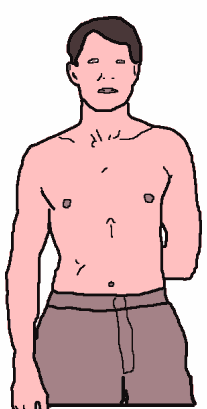
|
|
Pictures: Top row - Protruding shoulder blade - the corner of the shoulder blade
has lifted away from the underlying ribs. Bottomn row - protruding shoulder blade corrected.
|

|

|
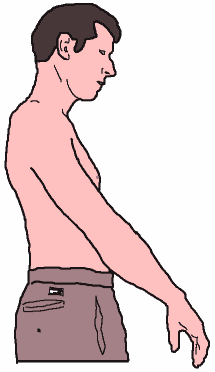
|
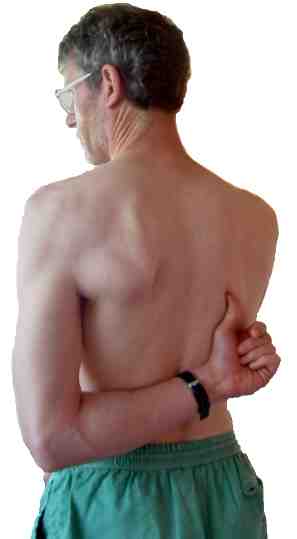
|
|
Working the Scapular Anchors: This exercise works
the "Scapular Anchors": The Lower Trapezius & the Serratus anterior.
These muscles are often weak, causing the shoulder blade to be poorly positioned.
Poor shoulder blade positioning contributes to shoulder impingement pain and rotator cuff injuries(1).
It is associated with kyphosis, swayback, and also scoliosis(3).
Work to avoid protruding shoulder blades! - You will look better and save yourself a lot of pain!
|
Pictures of the Scapular Anchors: Left - The lower trapezius.
Right - The Serratus anterior (viewed from the front).
|

|
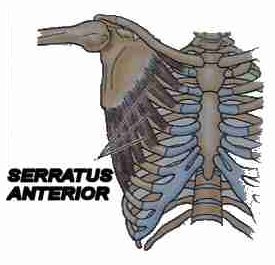
|
|
Important: Avoid neck and shoulder tension! While working your "scapular anchor muscles",
place a hand
on the arrowed parts to confirm that they are relaxed.
|
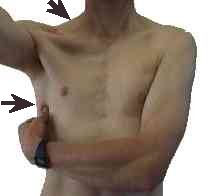
|
Reference
1. Shirley A Sahrmann: Diagnosis of and Treatment of Movement Impairment Syndromes
Publ. Mosby 2002
2. Steven Fromm:
Treatment, Management, Pictures, Scapular Winging
3. C Lehnert-Schroth
Inro to 3-D Scolisosis Treatment
-
Prevention of Protruding Shoulder Blades © Bruce Thomson, EasyVigour Project scroll up^^^^.....
|









